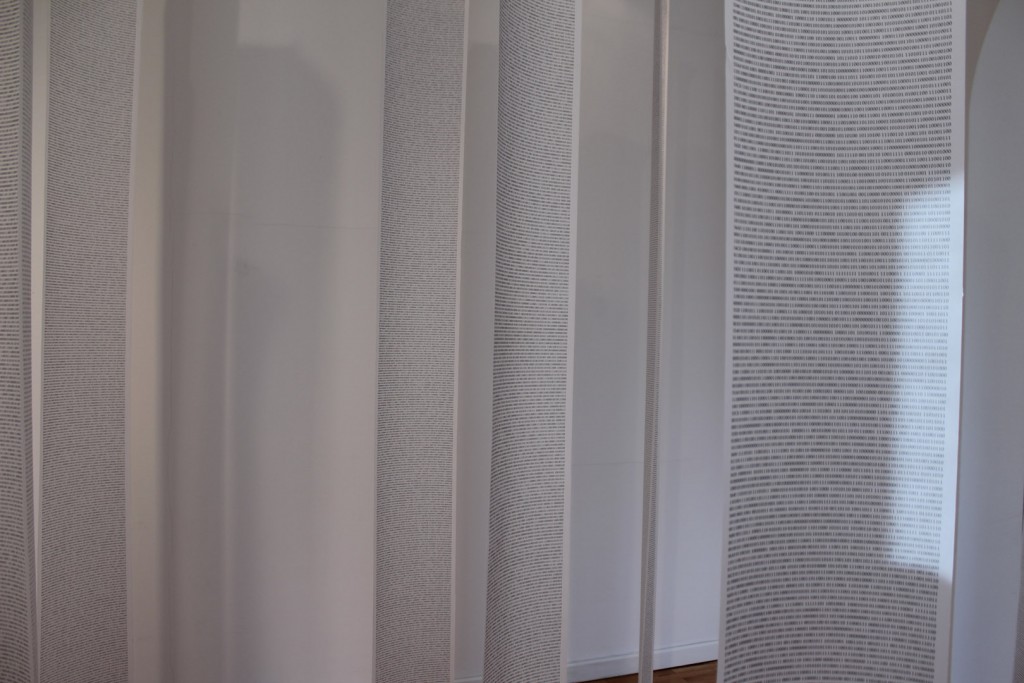DEKODIRANJE SEĆANJA / DECODING MEMORIES at MSURS Banja Luka
Decoding Memories at MSURS Banja Luka #MementoUrbis
DEKODIRANJE SEĆANJA / DECODING MEMORIES
ambijentalna instalacija, deo izložbe MEMENTO URBIS / ambiental installation, part of the MEMENTO URBIS exhibition
DEKODIRANJE SEĆANJA (scroll down for English)
Teorijska osnova ovog rada, kao i sam rad, predstavljaju deo mog doktorskog umetničkog projekta. Polazna tačka je pitanje očuvanja memorije grada, kako na ličnom tako i na opštem nivou. U cilju očuvanja ličnih sećanja na porodičnu kuću, koja se nalazila u jednom od starih delova Beograda, počela sam da digitalizujem sve materijale iz porodične arhive, vezane za privatni život porodice a istovremeno i za taj konkretan deo grada u kojem sam provela svoje detinjstvo. Prebacivanje u digitalni format i prenos u virtuelni prostor doveli su me do teorijskog problema kojim se bavio Boris Grojs postavljajući pitanje koliko je digitalna slika snažna. Tvrdnja je da je snažan sam digitalni fajl koji kao skup nevidljivih kodova predstavlja original digitalne slike, dok je vidljiva slika samo kopija. Istražujući taj problem došla sam do binarne i heksadecimalne predstave digitalnih slika koje su predstavljale moja sećanja. Rezultat, u svom fizičkom obliku, je na desetine metara dugačka traka papira koja sabira sve kodove koji odgovaraju jednoj slici u internet rezoluciji. Ideja je da materijalno prikažem odnos digitalnog originala i digitalne kopije, te da ispitam validnost ljudskog sećanja, kao i svu njegovu fragilnost, efemernost i podložnost svođenju na nečitljive binarne ili heksadecimalne kodove.
DECODING MEMORIES
The theoretical basis of this work and the work itself are a part of my PhD art project. The question underpinning it concerns the preservation of the memory of the city, both on a personal level and on a more universal level. In order to preserve the personal memories of my family house, located in one of the old parts of Belgrade, I started to digitise all the materials I found in our family archive related to our private life, as well as to that particular part of the city, where I spent my childhood. Converting these materials to digital format and transferring them to virtual space led me to the theoretical problem addressed by Boris Groys, which is questioning the power of the digital image. It is claimed that all of its power is contained in the digital file, which is a set of invisible codes representing the original of the digital image, while what we see is merely a copy of it. As I investigated this problem, I created binary and hexadecimal representations of my digital images, which also represent my memories. The result, in its physical form, is a strip of paper a dozen metres long, a collection of all the codes that correspond to one image in Internet resolution. The idea is to physically represent the relation between a digital original and a digital copy and to explore the validity of human memory, along with its fragility, transience and susceptibility to reduction to illegible binary or hexadecimal codes.
http://ninatodorovic.blogspot.com/2015/03/dekodiranje-secanja-decoding-memories.html










Recent Comments